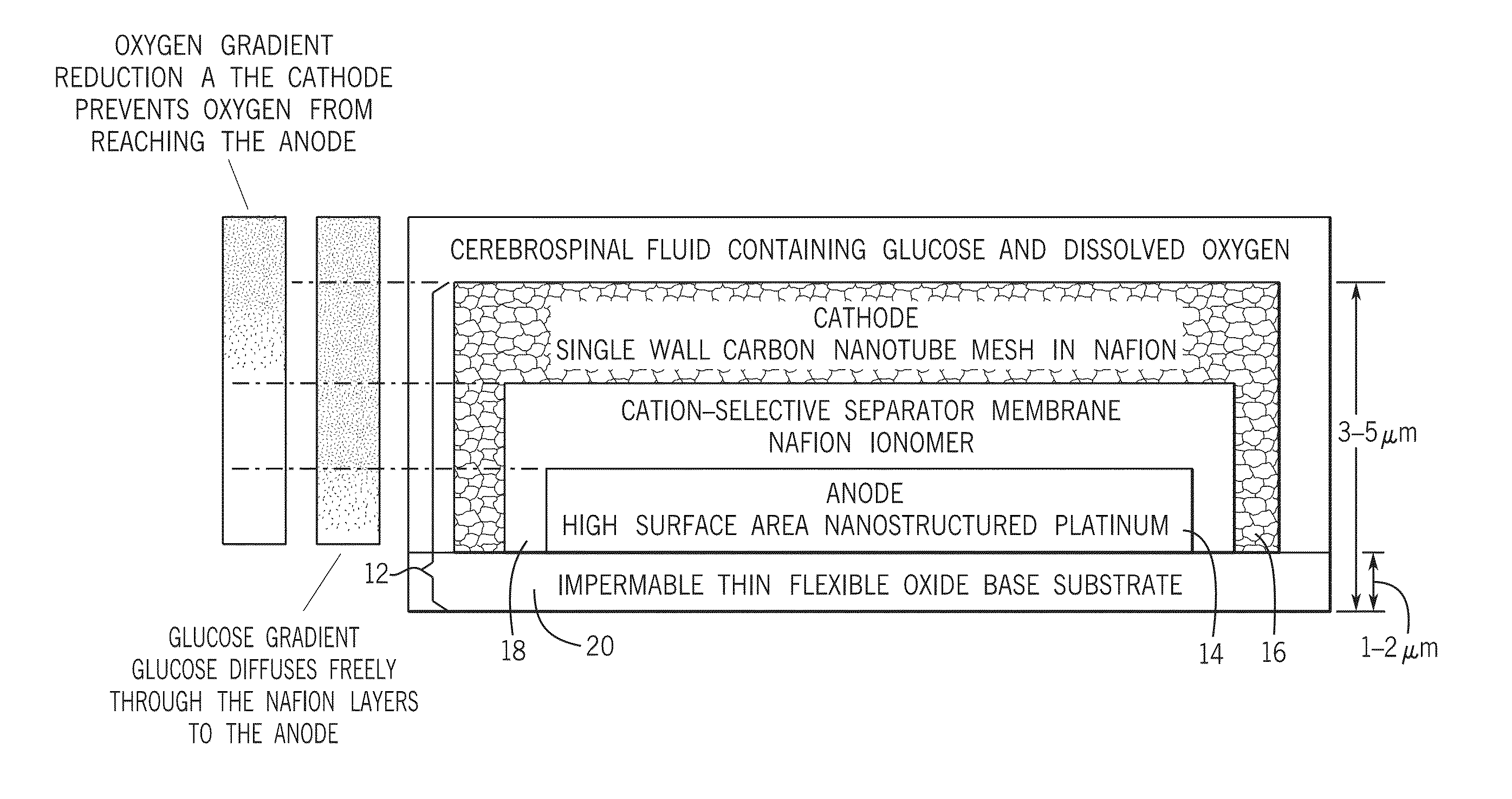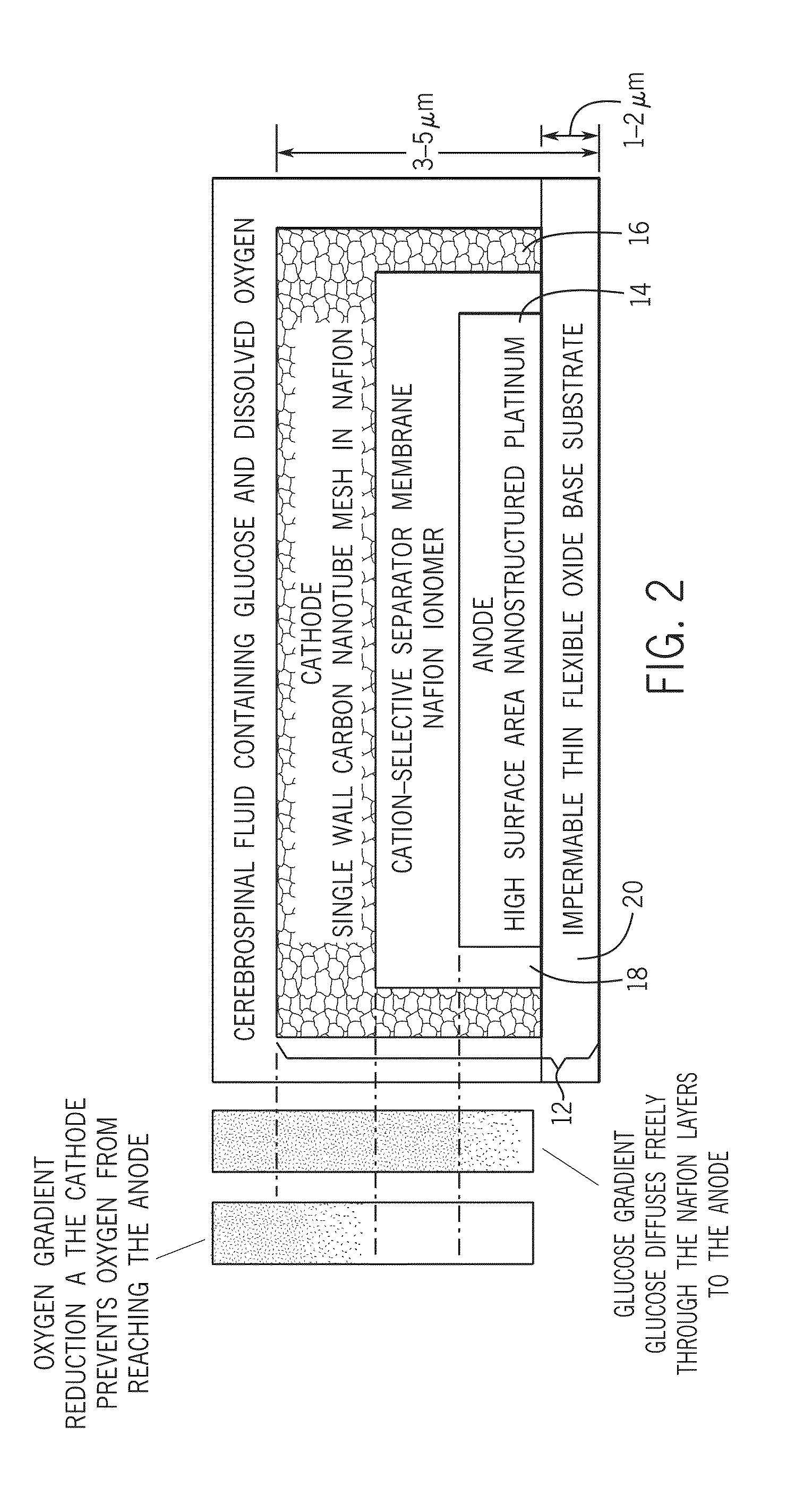Flexible and Implantable Glucose Fuel Cell
a fuel cell, flexible technology, applied in cell components, sustainable manufacturing/processing, therapy, etc., can solve the problems of microbial fuel cells of the present generation that are not suitable for biological implanted applications, the least catalytic efficiency of the three design paradigms, and the limited life of the fuel cell, etc., to achieve the effect of improving the volumetric limit on oxidation or reduction current density, improving the volumetric power density, and being flexibl
- Summary
- Abstract
- Description
- Claims
- Application Information
AI Technical Summary
Benefits of technology
Problems solved by technology
Method used
Image
Examples
Embodiment Construction
[0032]Referring first to FIGS. 2 and 3, a solid-state glucose fuel cell design according to one aspect of the invention is illustrated. The solid state glucose fuel cell 10 uses a half-open, two-chamber design that is sized and shaped to fit a particular anatomic compartment, and is constructed using semiconductor fabrication techniques as will be described in greater detail below. To provide context for the description that follows, it is contemplated that this glucose fuel cell 10 may be received into a given constrained volume of implantation in a vertebrate in which the glucose fuel cell has access to cerebrospinal fluid including glucose. Among other things, cerebrospinal fluid contains glucose, but is relatively free from other substances that may foul the reactive surfaces of the fuel cell 10 and negatively impact the efficiency of the fuel cell 10. In such application, the glucose fuel cell 10 is relatively small in size and form factor having a footprint that does not excee...
PUM
| Property | Measurement | Unit |
|---|---|---|
| thick | aaaaa | aaaaa |
| volumes | aaaaa | aaaaa |
| open circuit voltage | aaaaa | aaaaa |
Abstract
Description
Claims
Application Information
 Login to View More
Login to View More - R&D
- Intellectual Property
- Life Sciences
- Materials
- Tech Scout
- Unparalleled Data Quality
- Higher Quality Content
- 60% Fewer Hallucinations
Browse by: Latest US Patents, China's latest patents, Technical Efficacy Thesaurus, Application Domain, Technology Topic, Popular Technical Reports.
© 2025 PatSnap. All rights reserved.Legal|Privacy policy|Modern Slavery Act Transparency Statement|Sitemap|About US| Contact US: help@patsnap.com



